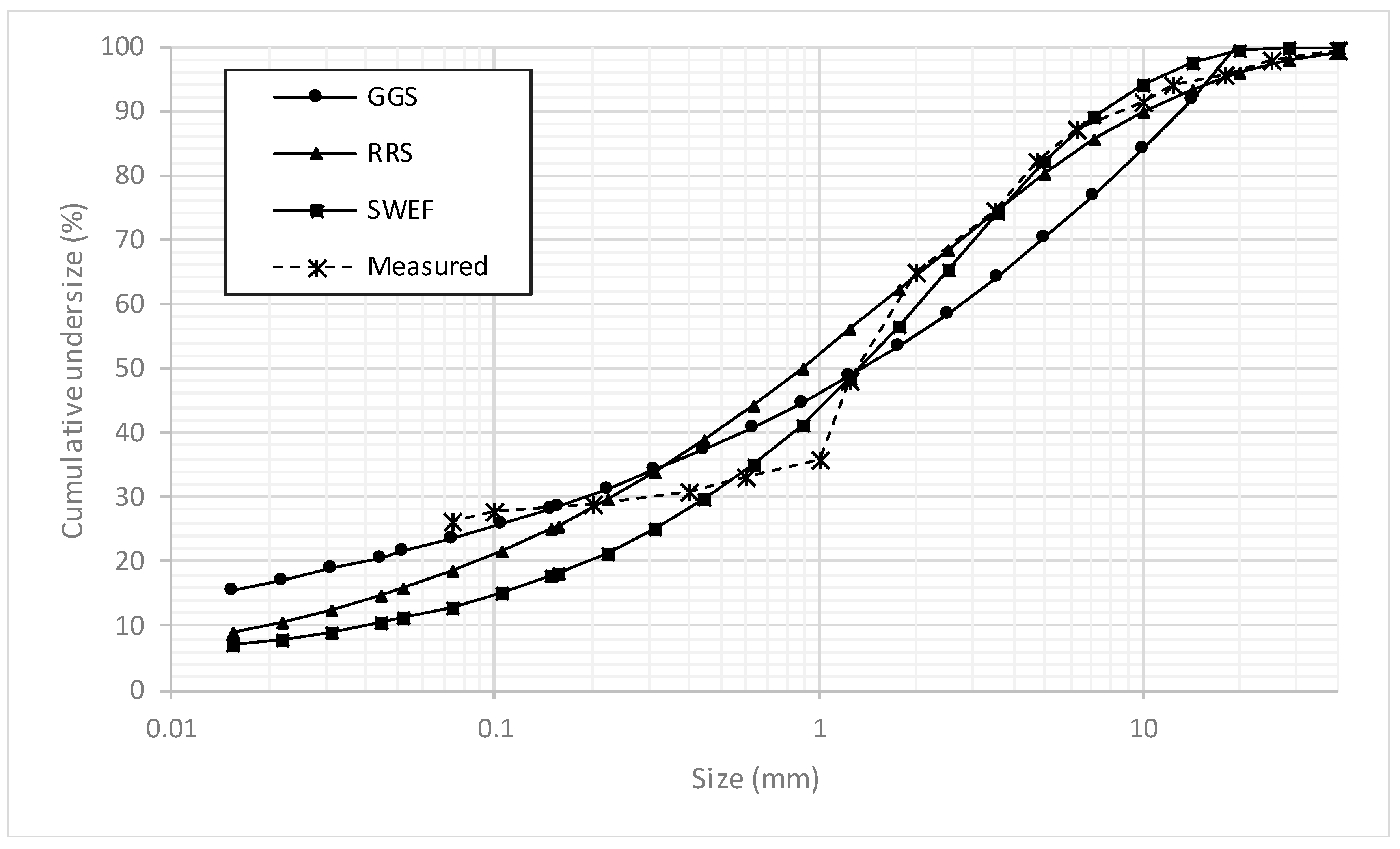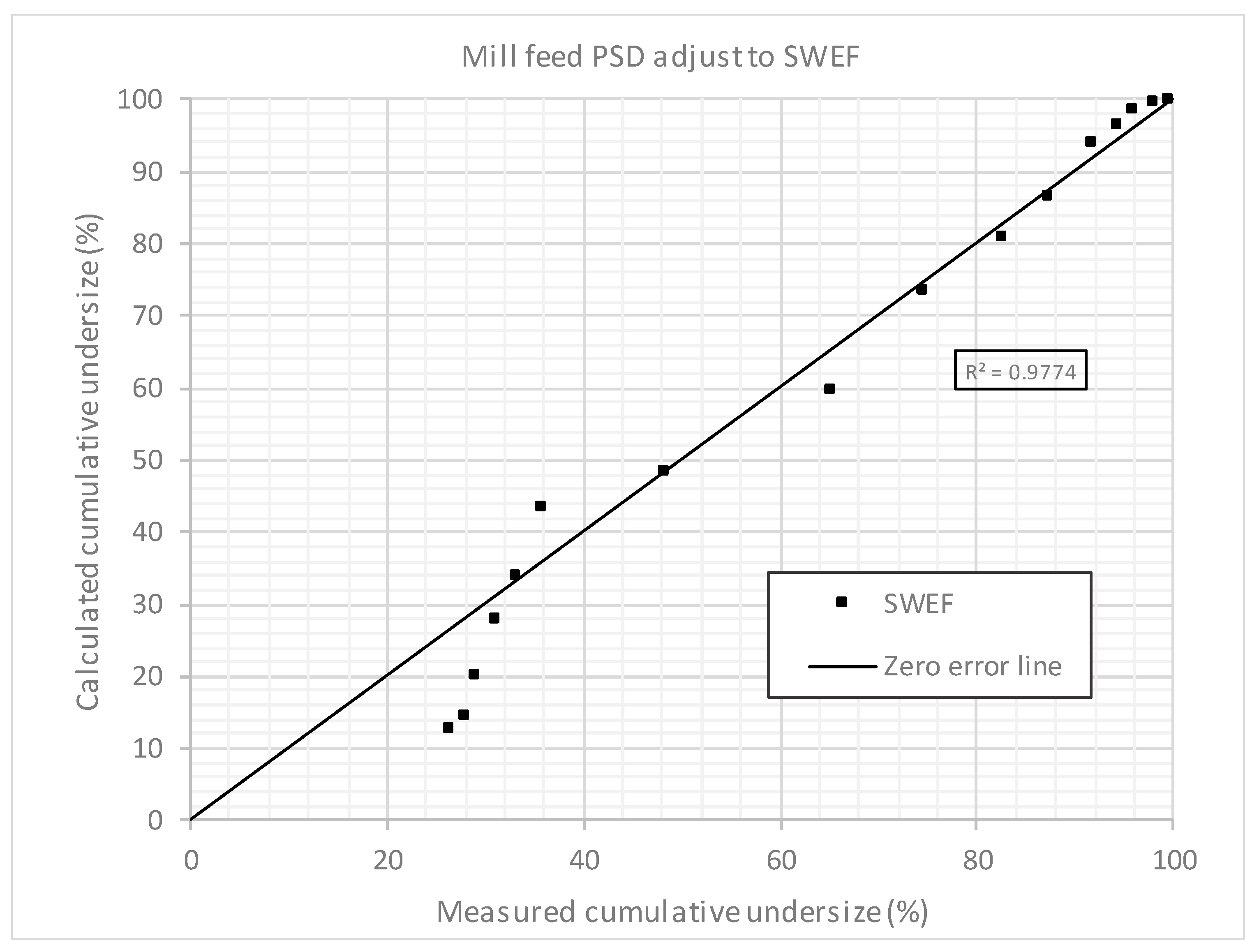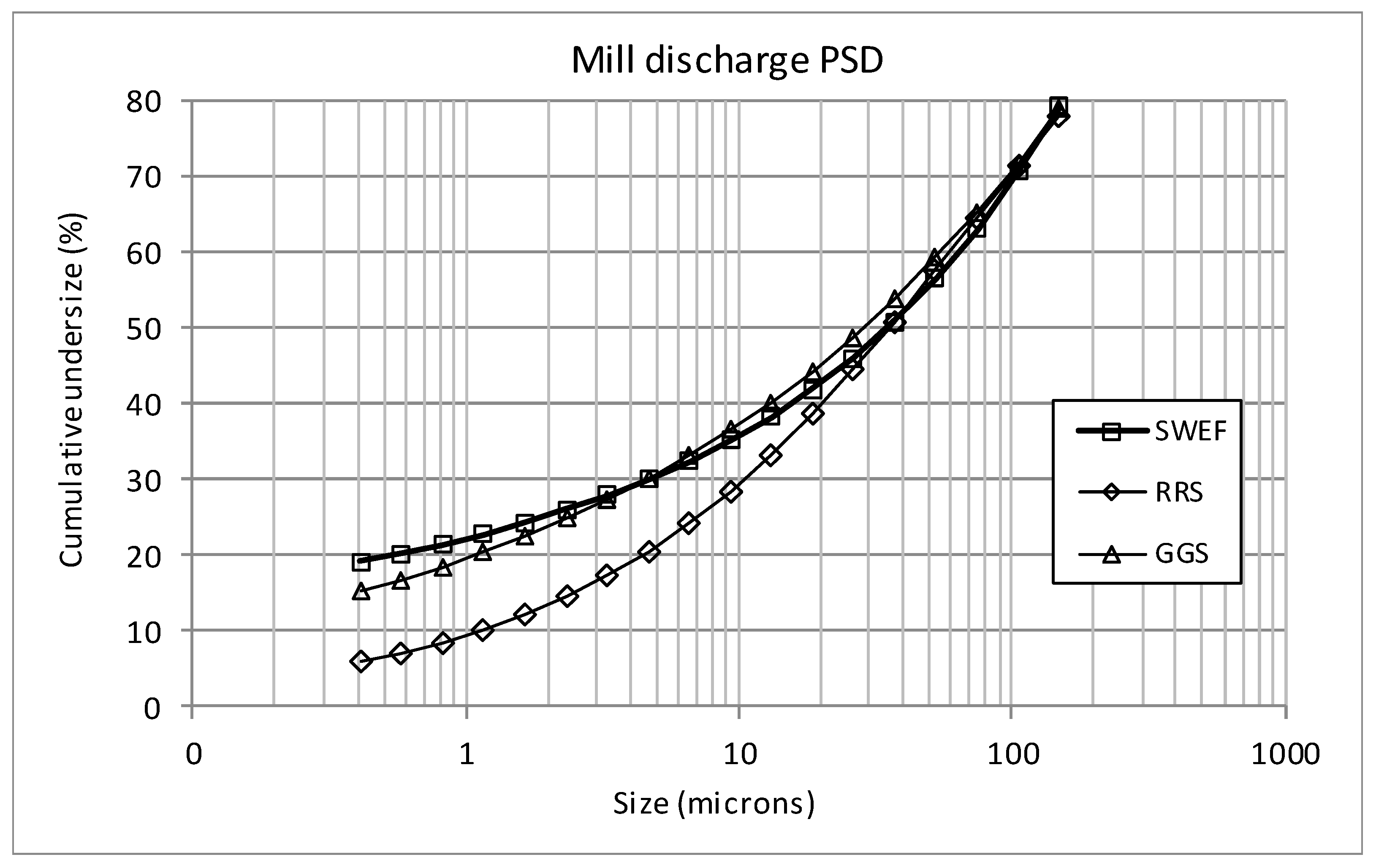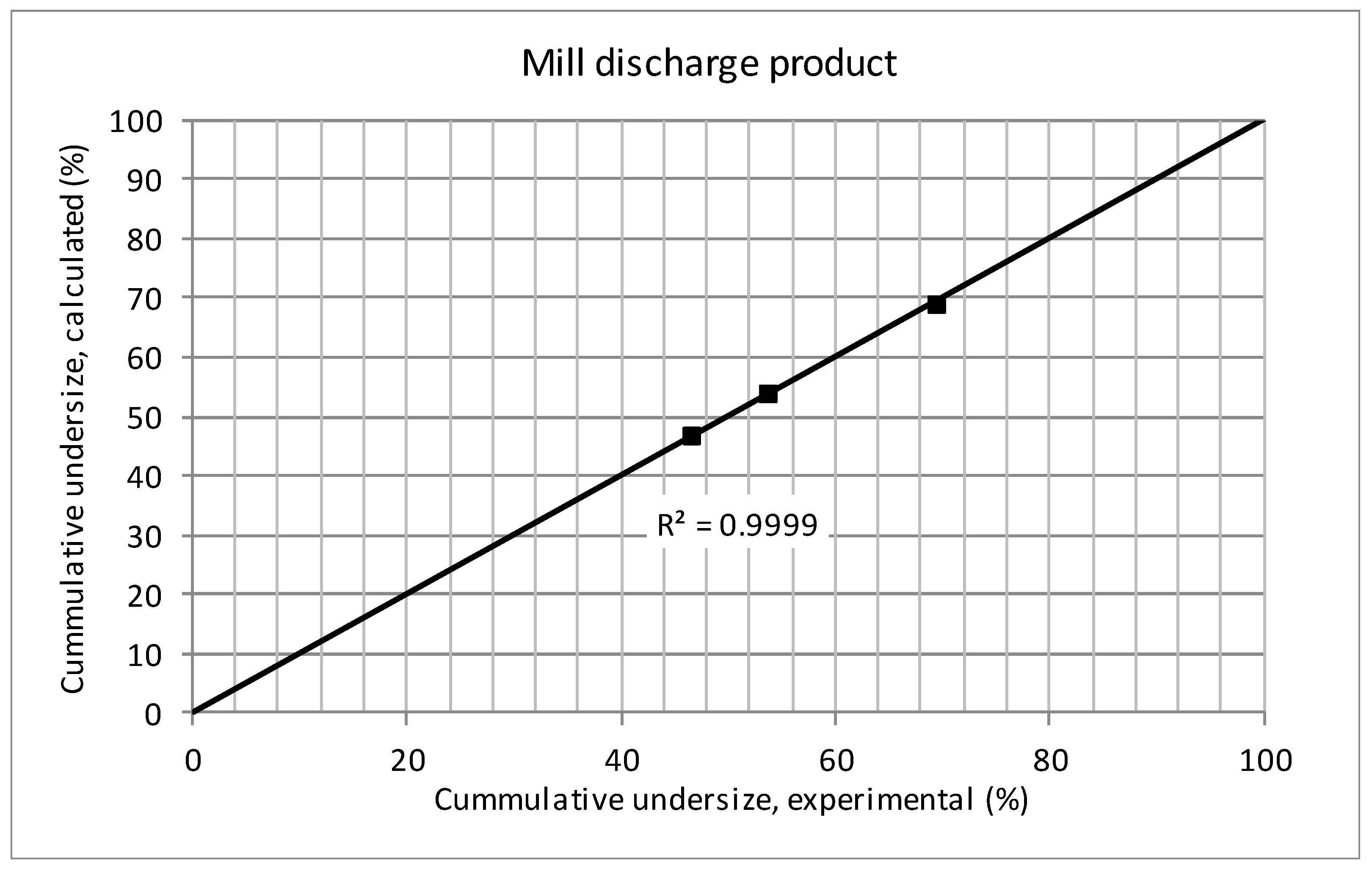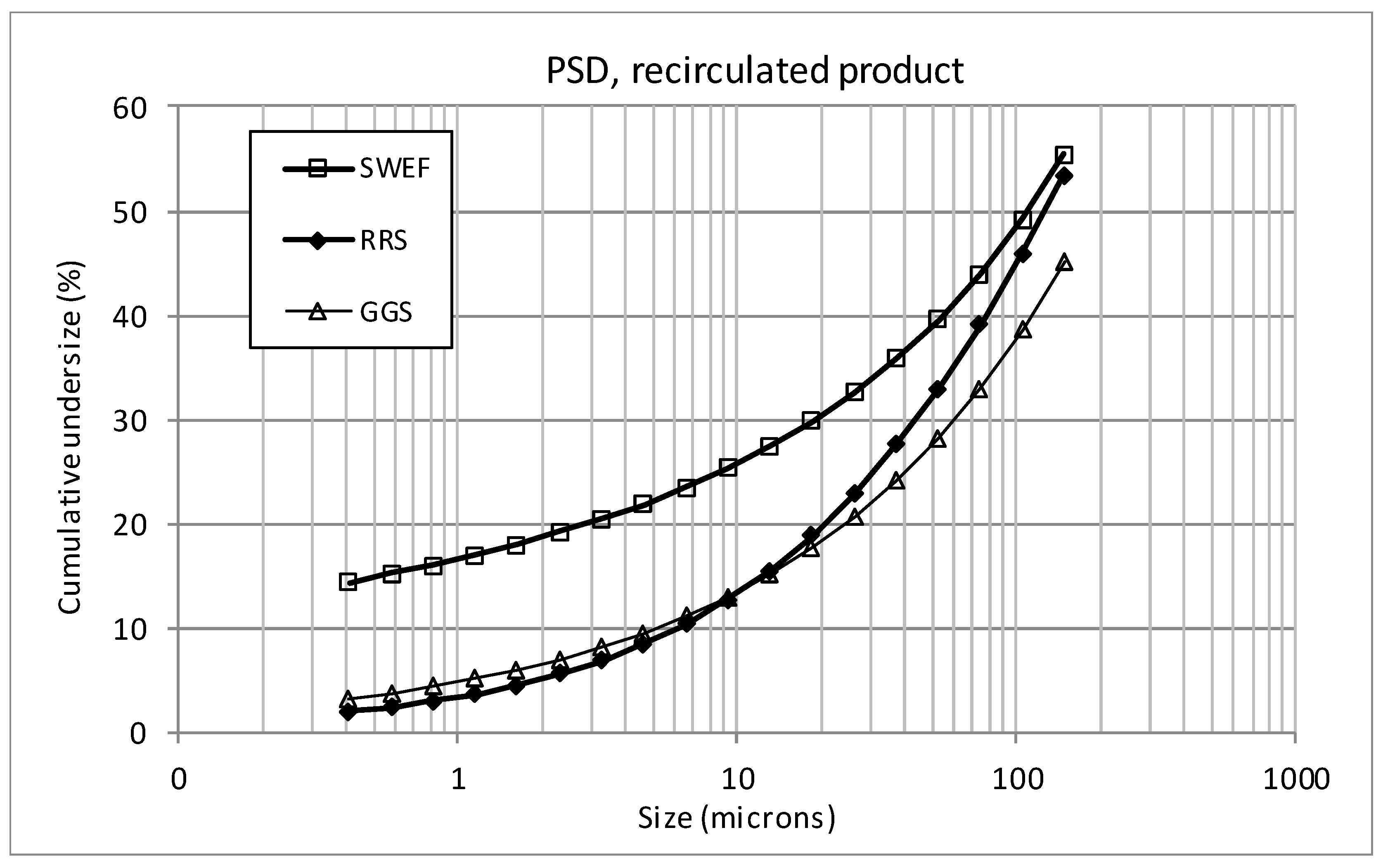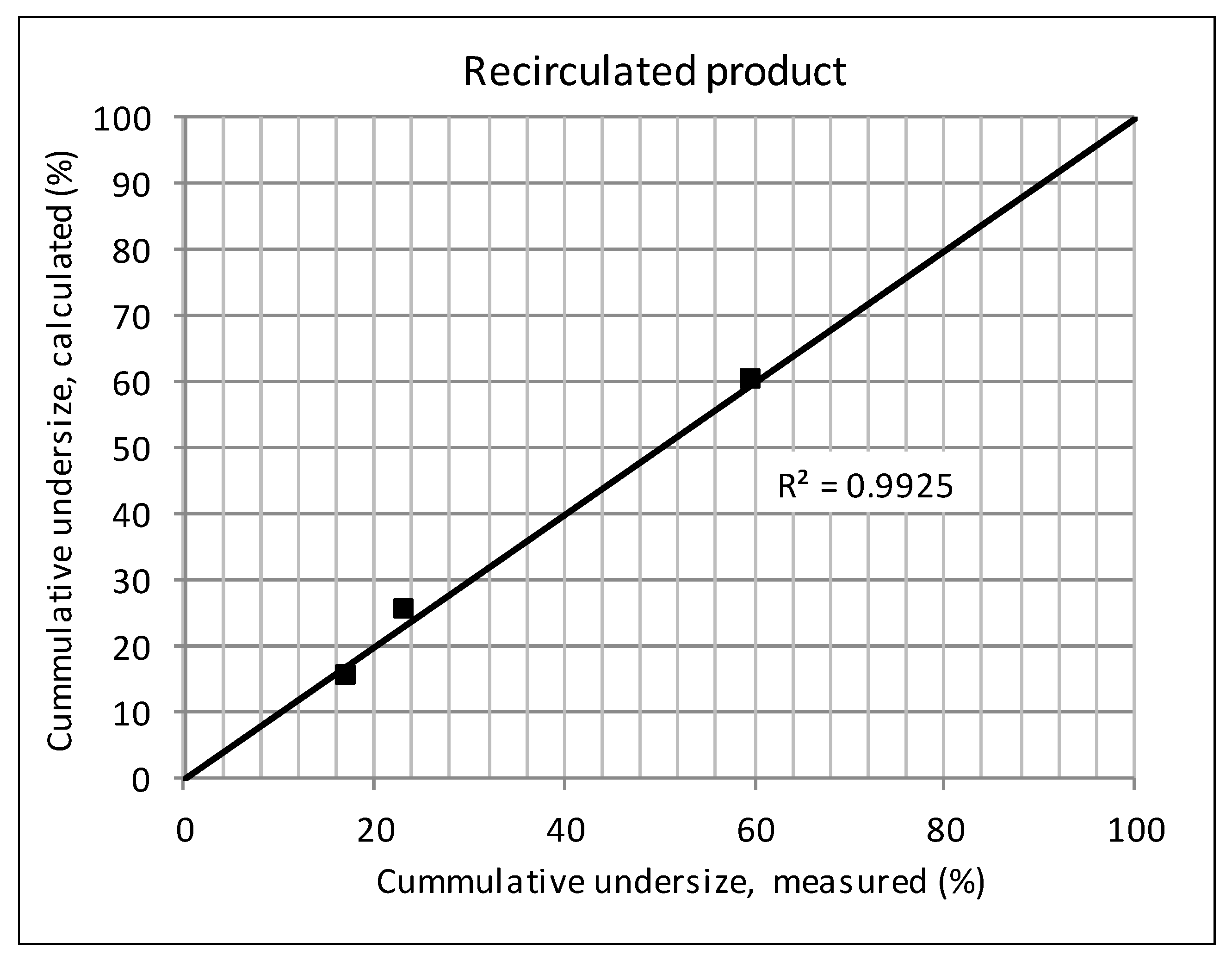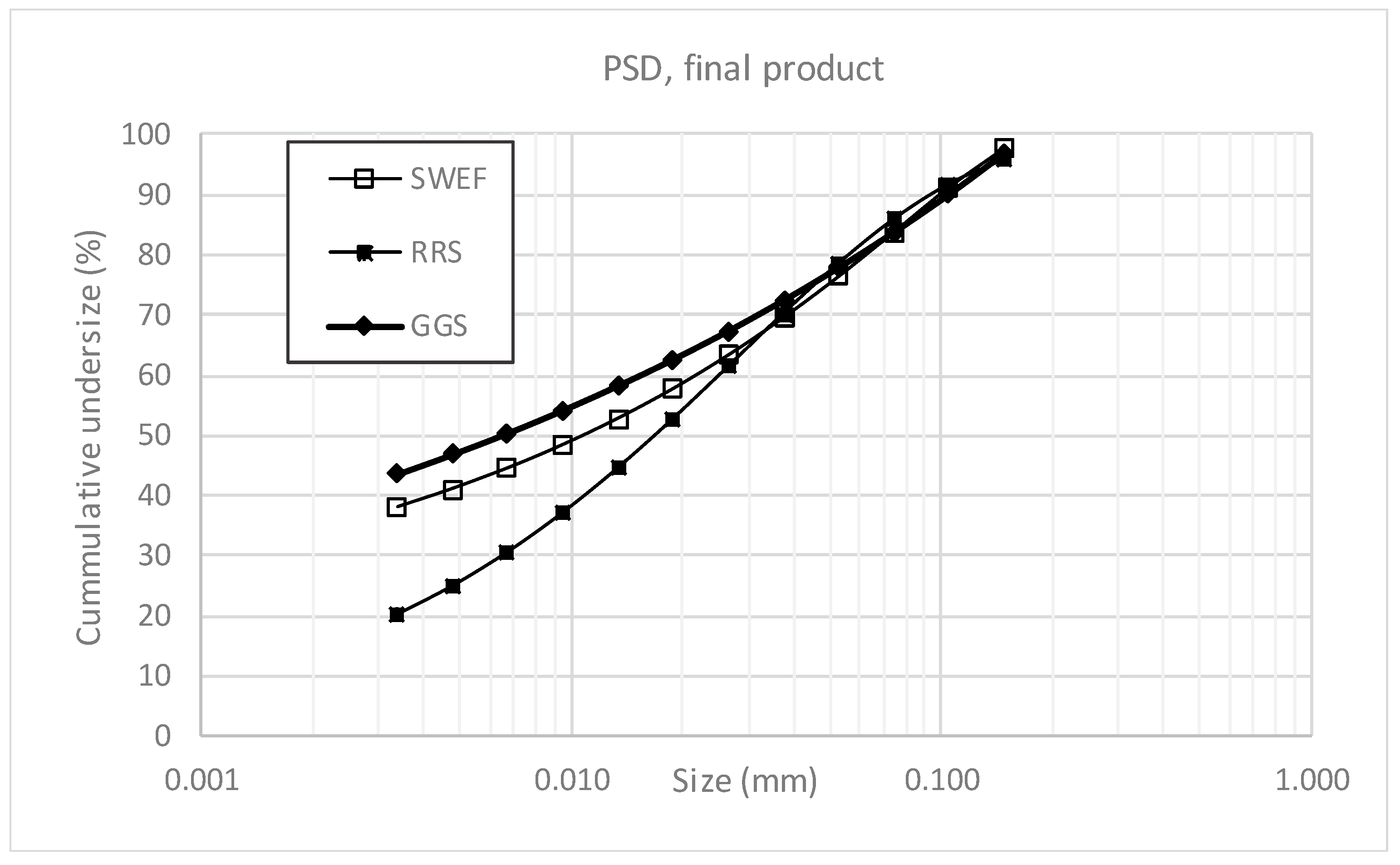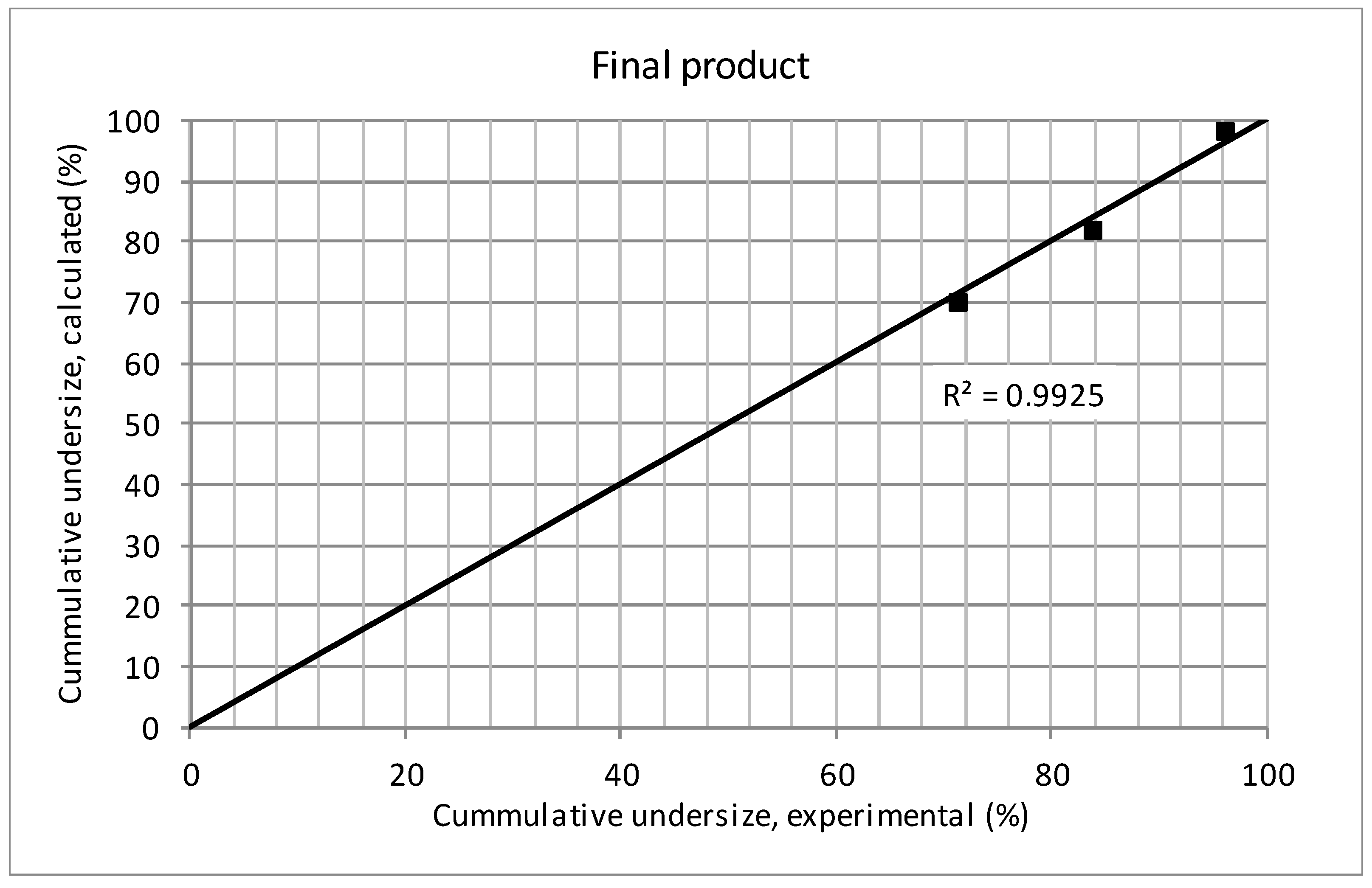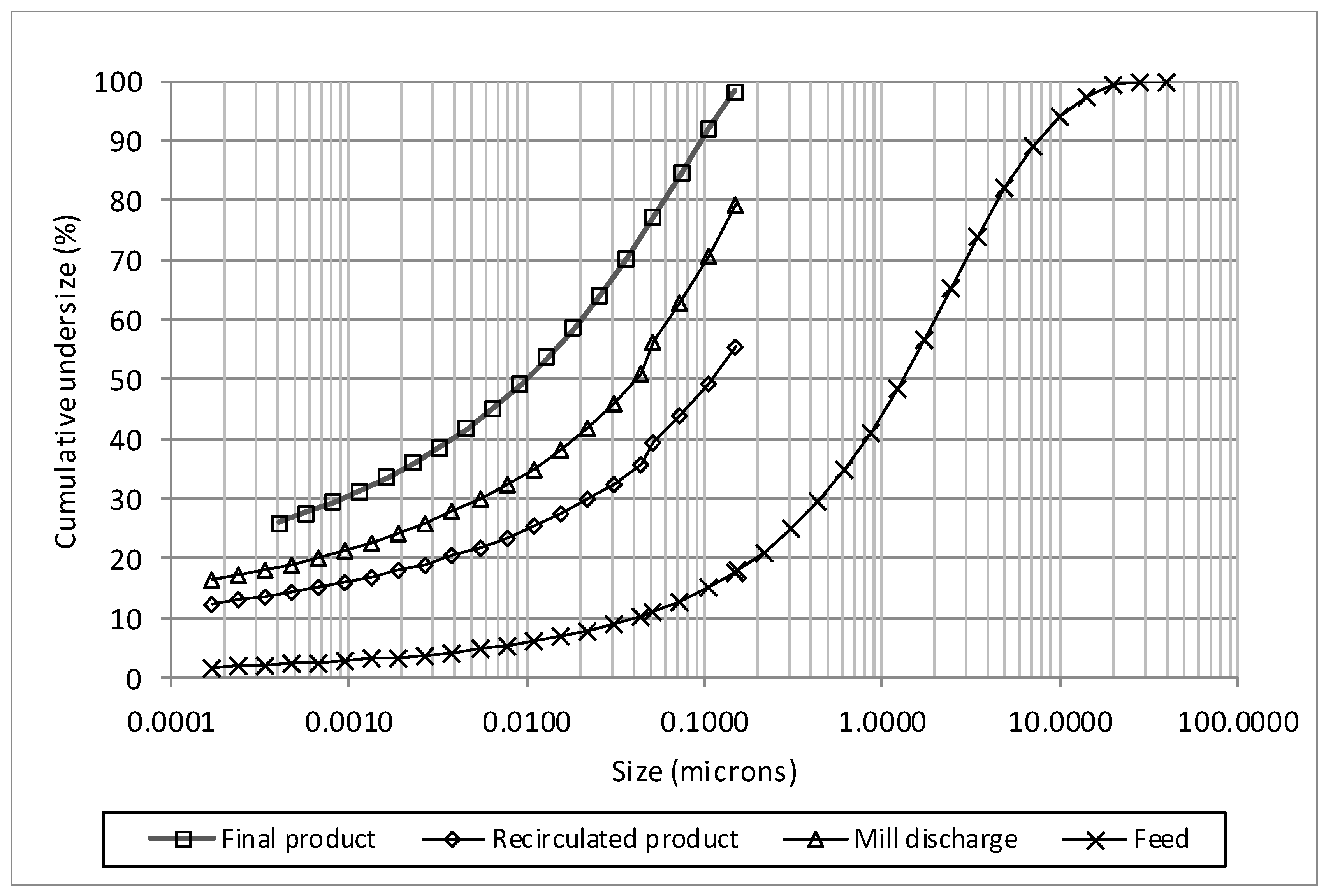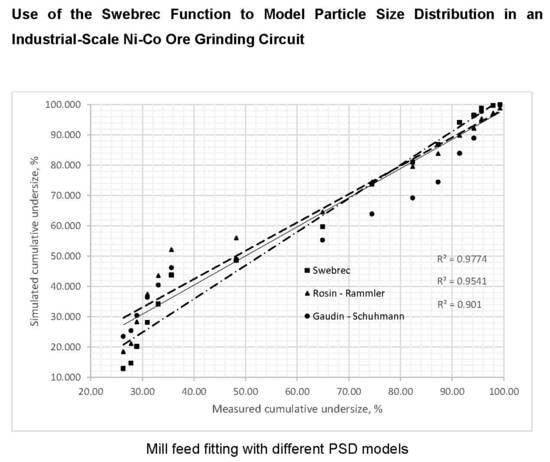Author Contributions
Conceptualization, J.M.M.-A., A.L.C.-V.; Formal analysis, V.Q.A. and F.M.P.; Investigation, F.M.P. and R.M.A.; Methodology, A.L.C.-V. and J.M.M.-A.; Resources, V.Q.A. and F.M.P.; Supervision, V.Q.A. and A.L.C.-V.; Validation, L.L.; Writing – original draft, A.L.C.-V.;Writing—review & editing, J.M.M.-A.
Funding
This research received no external funding.
Acknowledgments
The authors are grateful to Alexis García for his support during the carrying out of the industrial tests and to the Technical Board of the ECCG company for the trust placed in the research team.
Conflicts of Interest
The authors declare no conflict of interest
References
- Ouchterlony, F. Fragmentation characterization; the Swebrec function and its use in blast engineering. In Proceedings of the 9th International Symposium on Rock Fragmentation by Blasting—Fragblast 9, Granada, Spain, 13–17 August 2009; pp. 3–22. [Google Scholar]
- Coello-Velázquez, A.L. Sovershenstvovanie tecnologii izmilchenii lateritobij pud na zabode “Punta Gorda”. Ph.D. Thesis, IMS, Saint Petersburg, Russia, 1993. [Google Scholar]
- Aguado, J.M.M.; Velázquez, A.L.C.; Tijonov, O.N.; Díaz, M.A.R. Implementation of energy sustainability concepts during the comminution process of the Punta Gorda nickel ore plant (Cuba). Powder Technol. 2006, 170, 153–157. [Google Scholar] [CrossRef]
- Coello Velázquez, A.L.; Menéndez-Aguado, J.M.; Brown, R.L. Grindability of lateritic nickel ores in Cuba. Powder Technol. 2008, 182, 113–115. [Google Scholar] [CrossRef]
- Chalkley, M.E.; Collins, M.J.; Iglesias, C.; Tuffrey, N.E. Effect of magnesium on pressure leaching of Moa Laterite ore. Can. Metall. Q 2010, 49, 227–234. [Google Scholar] [CrossRef]
- Sanchidrián, J.A.; Ouchterlony, F.; Moser, P.; Segarra, P.; López, L.M. Performance of some distributions to describe rock fragmentation data. Int. J. Rock Mech. Min. Sci. 2012, 53, 18–31. [Google Scholar] [CrossRef]
- Sbarbaro, D.; Ascencio, P.; Espinoza, P.; Mujica, F.; Cortes, G. Adaptive soft-sensors for on-line particles estimation in wet grinding circuits. Control Eng. Practice. 2008, 16, 171–178. [Google Scholar] [CrossRef]
- Ko, Y.-D.; Shang, H. A neural network-based soft sensor for particle size distribution using image analysis. Powder Technol. 2011, 212, 359–366. [Google Scholar] [CrossRef]
- Wills, B.A.; Finch, J.A. Wills’ Mineral Processing Technology: An Introduction to the Practical Aspects of Ore Treatment and Mineral Recovery, 8th ed.; Elsevier: Amsterdam, The Netherlands, 2016; p. 498. [Google Scholar]
- Ouchterlony, F. The Swebrec function: Linking fragmentation by blasting and crushing. Institution of Mining and Metallurgy. Min. Technol. 2005, 114, 29–44. [Google Scholar] [CrossRef]
- Ouchterlony, F.; Moser, P. Likenesses and differences in the fragmentation of full-scale and model-scale blasts. In Proceedings of the 8th International Symposium on Rock Fragmentation by Blasting–Frag blast 8, Santiago, Chile, 7–11 May 2006; pp. 207–220. [Google Scholar]
- Álvarez Rodríguez, B.; González García, G.; Coello-Velázquez, A.L.; Menéndez-Aguado, J.M. Product size distribution function influence on interpolation calculations in the Bond ball mill grindability test. Int. J. Miner. Process. 2016, 157, 16–20. [Google Scholar] [CrossRef]
- Kelly, E.G.; Spottiswood, D.J. Introduction to Mineral Processing; John Willey and Sons: Hoboken, NJ, USA, 1982. [Google Scholar]
- Blair, D.P. Curve-fitting schemes for fragmentation data. Fragblast. Int. J. Blast. Fragment. 2004, 8, 137–150. [Google Scholar]
- Kuznetsov, V.M. The mean diameter of the fragments formed by blasting rock. Sov. Min. Sci. 1973, 9, 144–148. [Google Scholar] [CrossRef]
- Djordjevic, N. Two-component model of blast fragmentation. In Proceedings of the 6th International Symposium on Rock Fragmentation by Blasting, Johannesburg, South Africa, 8–12 August 1999; pp. 213–219. [Google Scholar]
- Kanchibotla, S.S.; Valery, W.; Morell, S. Modelling fines in blast fragmentation and its impact on crushing and grinding. In Proceedings of the Conference on Rock Breaking, Kalgoorlie, WA, USA, 7–11 November 1999; pp. 137–144. [Google Scholar]
- Osorio, A.M.; Menéndez-Aguado, J.M.; Bustamante, O.; Restrepo, G.M. Fine grinding size distribution analysis using the Swebrec function. Powder Technol. 2014, 258, 206–208. [Google Scholar] [CrossRef]
- Coello-Velázquez, A.L. Procedimiento para la determinación de la carga circulante en circuitos cerrados de trituración y molienda. Minería y Geología 2015, 31, 66–79. [Google Scholar]
- Menéndez-Aguado, J.M.; Coello, A.L.; Tikjonov, O.N.; Rodríguez, M. Implementation of sustainable concepts during comminution process in Punta Gorda nickel ore plant. Powder Technol. 2006, 170, 153–157. [Google Scholar] [CrossRef]
© 2019 by the authors. Licensee MDPI, Basel, Switzerland. This article is an open access article distributed under the terms and conditions of the Creative Commons Attribution (CC BY) license (http://creativecommons.org/licenses/by/4.0/).
